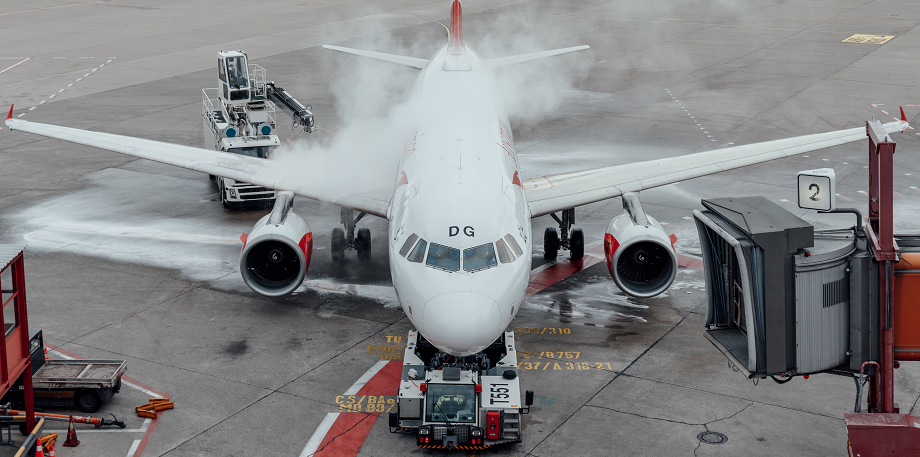Introduction to Aircraft Ground Anti Icing / De-Icing Presented by Sofema Aviation Services (SAS) www.sassofia.com
Introduction Concerning the Hazards of Ice, Snow, and Frost
A small ice secretion of only 0.40 mm caused by ice, snow or frost, is able to disrupt the airflow over the lift and control surfaces of an aircraft.
The consequence of the roughness caused by this secretion can be the severe loss of lift as well as:
· Increased drag
· Increased weight
· Impaired manoeuvrability
o Particularly during the take-off and initial climb phases of flight.
o Ice can also interfere with the movement of control surfaces or add significantly to aircraft weight.
Note – There is no such thing as an insignificant amount of ice. It is also possible for Ice to be invisible to the eye this is referred to as clear ice. (This ice may be detected by performing a tactile inspection, if feasible)
Take note that Ice can form when the Outside Air Temperature (OAT) is above 0°C.
What is the Difference between Aircraft Ground Anti Icing & De-Icing?
Aircraft de-icing means that an aircraft contaminated with snow, ice, frost, or hoarfrost has these contaminants removed.
Aircraft Anti-Icing provides a layer of protection to prevent Ice forming.
It usually depends on the weather conditions as well as Traffic. Operational and Airport Standard Operating Procedures as to which the actual procedures are carried out.
Cold Soaking
When an aircraft utilises wing fuel tanks, it is possible for the contained fuel to be at a sufficiently low temperature to cause the lowering of the wing skin temperature to below the freezing point.
· Cold-soaking can also be caused by fuelling an aircraft with cold fuel. If there is rain or high humidity, ice can form on the cold-soaked wing and accumulate over time.
· This situation can also occur when an aircraft has been cruising at a high altitude for a period of time followed by a quick descent to a landing in a humid environment.
· Liquid water coming in contact with a wing, which is at a below-freezing temperature, will then freeze to the wing surfaces.
Rear-mounted Engine Concern Related To Ice Accretion
· Sheets of clear ice dislodged from the wing or fuselage during either take off or climb can be ingested by aft fuselage-mounted engines with the potential for a flameout to occur. (may also cause impact damage to control surfaces for example the horizontal stabilizer.)
The Clean Aircraft Concept
An aircraft whose surfaces are contaminated with frost, ice, snow etc., cannot be considered as clean. Therefore, an aircraft is regarded as clean only once all surfaces have been completely cleaned from contamination and if it is protected against the possibility of re-icing.
Note regarding the subsequent application of Anti Icing Fluids – It is important to ensure that the second layer of anti-icing fluids as protection against re-icing should not be sprayed on the previous applied layer:
· If an additional application has to be carried out, a complete de-icing/anti-icing process has to be performed.
· Attention must be paid to the entire removal of possible residues of the previous application.
· It is not permitted to only conduct the anti-icing procedure.
Next Steps
Follow this link to our Library to find & Download related documents for Free.
Sofema Aviation Services (SAS) and Sofema Online (SOL) provide EASA Regulatory Compliant and Vocational training delivered as classroom, webinar, and online certificated courses – for details please see the websites www.sassofia.com & www.sofemaonline.com or email team@sassofia.com
Tags:
Aircraft, aviation, SAS blogs, Aircraft De-icing, Aircraft Anti-icing, Aviation Flight Operations, Anti Icing Fluids, Rear mounted Engine




